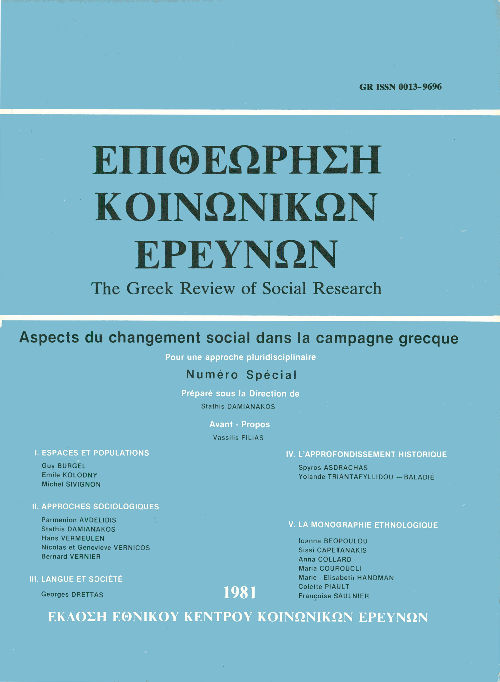Elymbos: A Karpathian village: The structure of an "Archaic" society
Abstract
Elymbos, situated on the Island of Karpathos. is a deeply stratified
village community, structured around three complementary
dichotomies: the first, between men and women, is revealed in the ex
istence of two lines of descent: the one paternal/masculine, the other
maternal/feminine: the second dichotomy is founded on relative age.
introducing discrimination between the oldest and youngest of both
sexes; the third is between two socio-professional groups: agri
culturists and shepherds. This system constitutes the reference
model.
Mass emigration is causing the progressive depopulation of the
village. Yet. even if the periodical return of the emigrants has led to
the upheaval of traditional social organization, the restructuring of
society which reveals a conflict between two different sets of values:
that of the tradiotional system and that of the outside world, is
superimposed on the reference model, though it has been drained of
its functional substance.
Article Details
- How to Cite
-
Capetanakis, S. (1981). Elymbos: A Karpathian village: The structure of an "Archaic" society. The Greek Review of Social Research, 200–207. https://doi.org/10.12681/grsr.576
- Issue
- 1981: Numero Special
- Section
- Articles

This work is licensed under a Creative Commons Attribution-NonCommercial 4.0 International License.
Authors who publish with this journal agree to the following terms:
- Authors retain copyright and grant the journal right of first publication with the work simultaneously licensed under a Creative Commons Attribution Non-Commercial License that allows others to share the work with an acknowledgement of the work's authorship and initial publication in this journal.
- Authors are able to enter into separate, additional contractual arrangements for the non-exclusive distribution of the journal's published version of the work (e.g. post it to an institutional repository or publish it in a book), with an acknowledgement of its initial publication in this journal.
- Authors are permitted and encouraged to post their work online (preferably in institutional repositories or on their website) prior to and during the submission process, as it can lead to productive exchanges, as well as earlier and greater citation of published work (See The Effect of Open Access).



